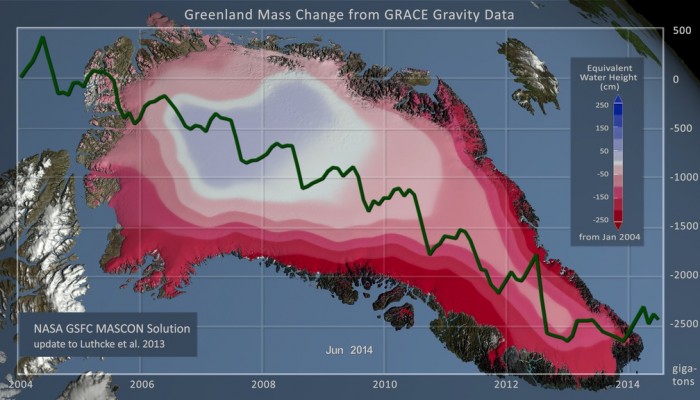
Monitoring the changing ice mass of the Greenland Ice Sheet provides valuable information about how the ice sheet is responding to changing climate, but how do we make these measurements over such a large area of ice? Using NASA’s GRACE satellites (twin-satellites flying in formation) it is possible to make detailed measurements of the Earth’s gravitational field. As ice is gained/lost from the ice sheet the local gravitational field will change. This will cause the distance between the two GRACE satellites to change by a small amount as they pass over the ice sheet and by measuring the changing distance between the two satellites with very high precision, the change in ice mass can be determined.
The image above shows the change in mass of the Greenland Ice Sheet between January 2004 and June 2014 (updated from Luthcke et al., 2013). The colours indicate the change in mass in units of water height equivalent ranging from -250 to +250 centimetres, with blue indicating a mass gain and red areas a mass loss. The graph overlay shows the total accumulated change in gigatons over the ten year period. A video animation of the changes over time can be seen using the NASA scientific visualisation studio:
Converting changes in the measured gravitational field to ice mass is a complex process and other factors contributing towards the change in gravitational field must be accounted for. One major factor is glacial isostatic adjustment (Earth’s mass redistribution in response to historical ice loading). To learn more about how glacial isostatic adjustment is accounted for to extract the ice mass change signal see Peltier et al. 2015.



